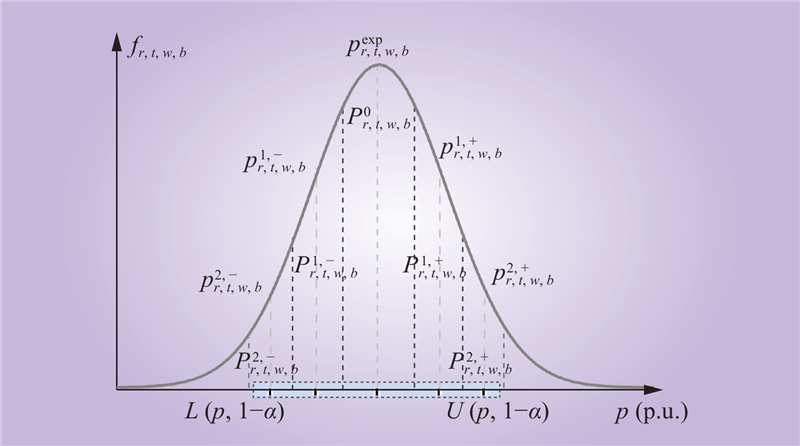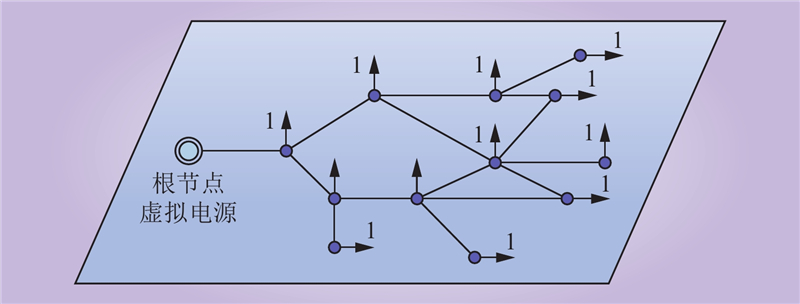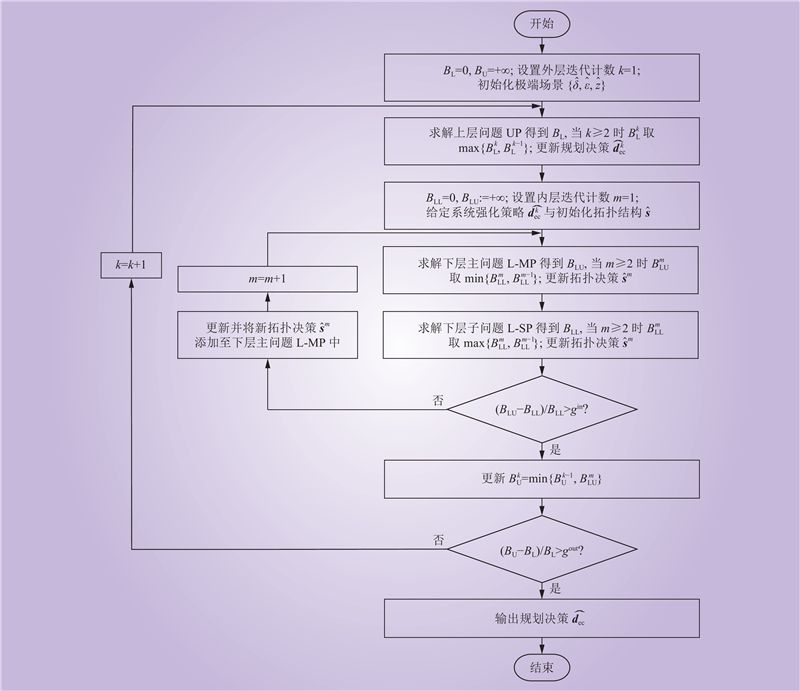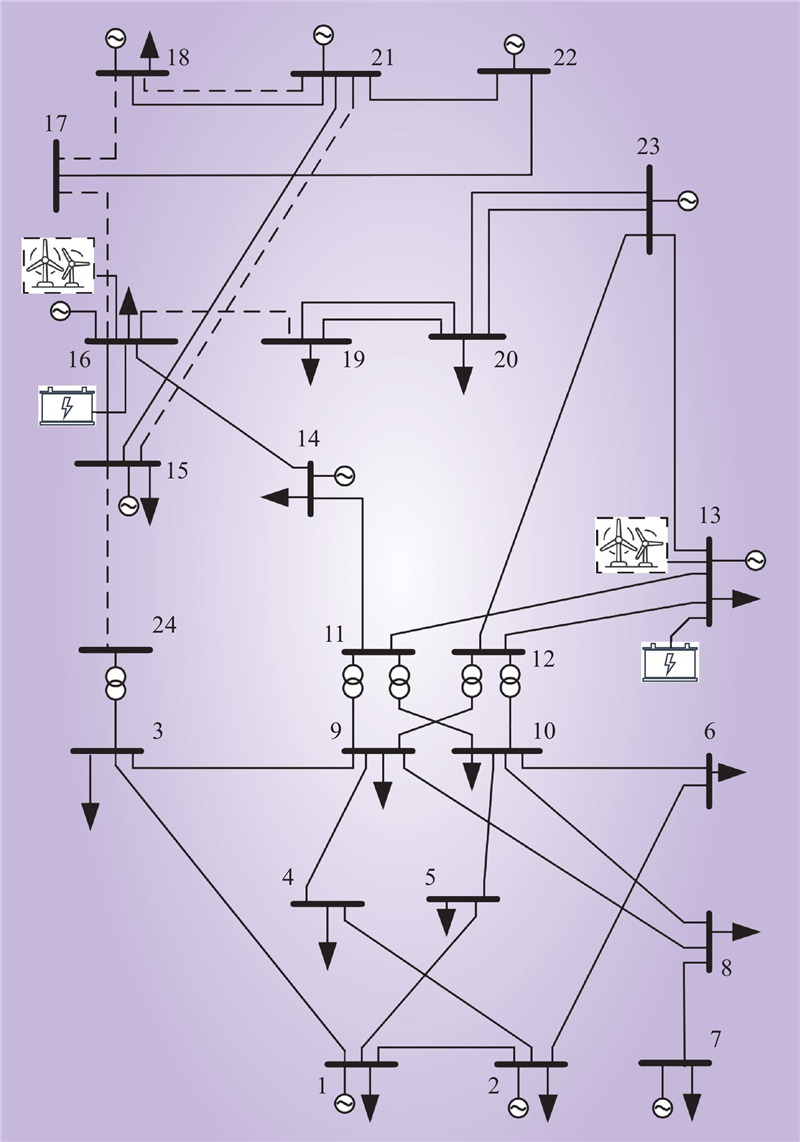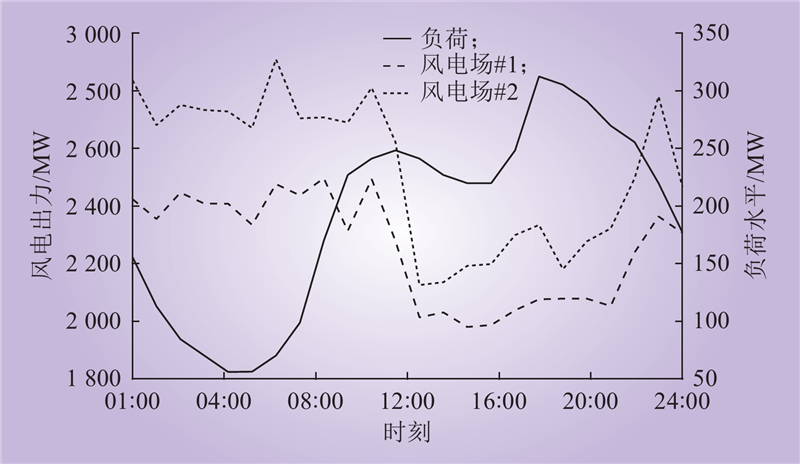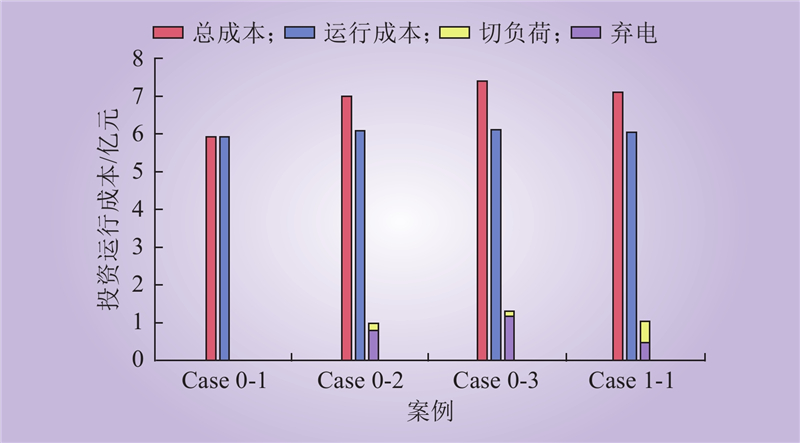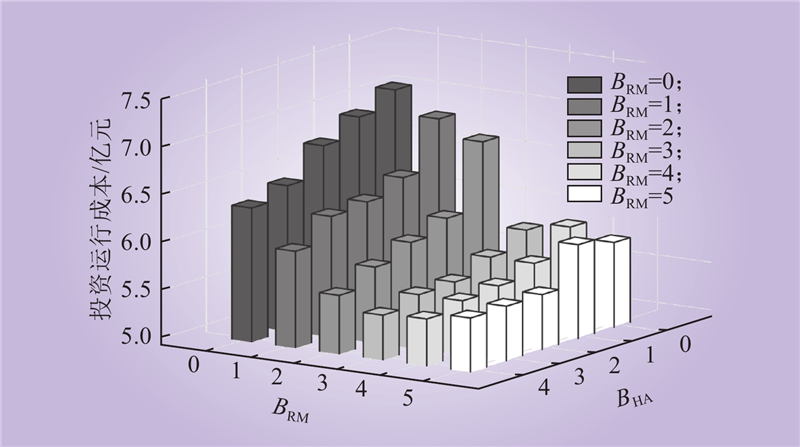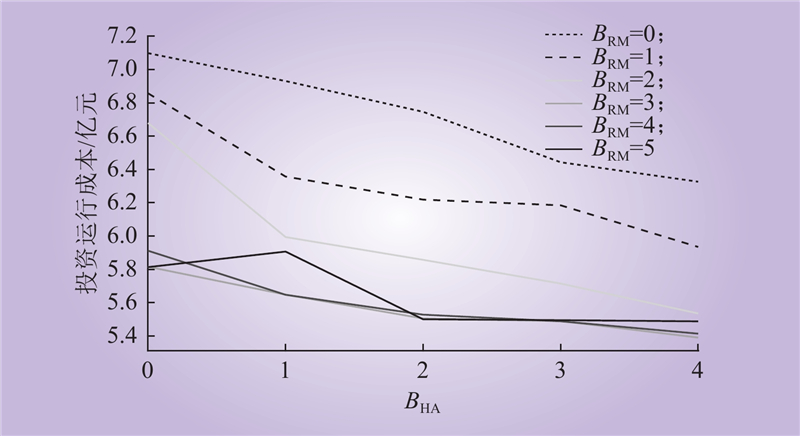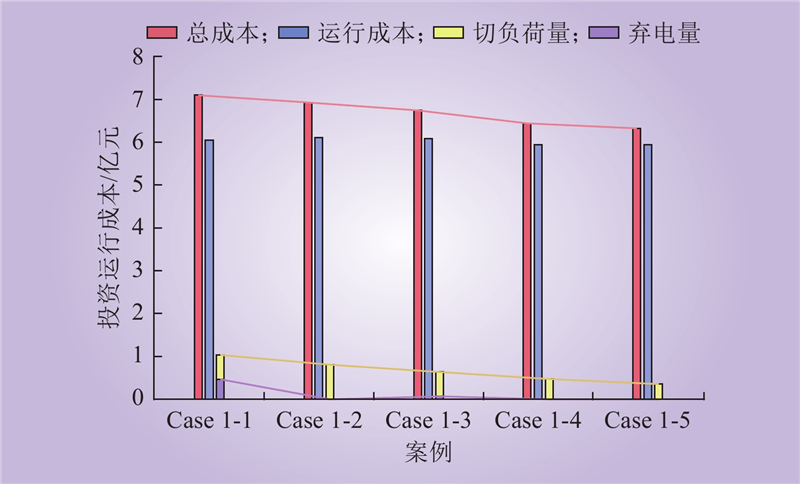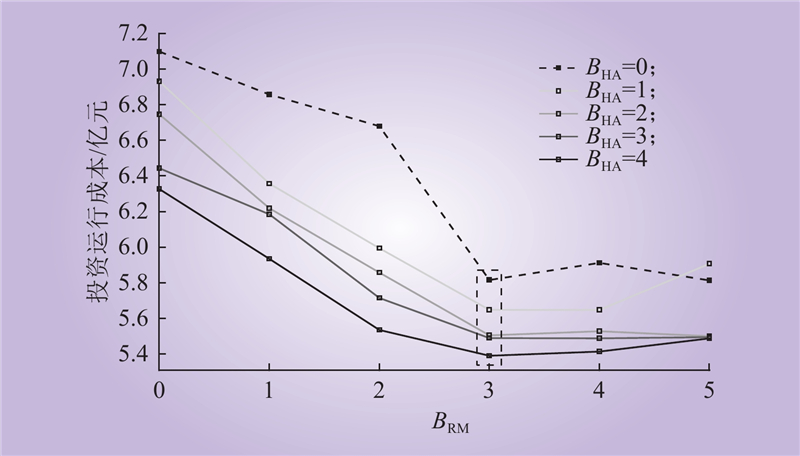| 1 |
ARIF A, MA S S, WANG Z Y, et al. Optimizing service restoration in distribution systems with uncertain repair time and demand[J]. IEEE Transactions on Power Systems, 2018, 33 (6): 6828- 6838.
DOI
|
| 2 |
李明节, 陈国平, 董存, 等. 新能源电力系统电力电量平衡问题研究[J]. 电网技术, 2019, 43 (11): 3979- 3986.
DOI
|
|
LI Mingjie, CHEN Guoping, DONG Cun, et al. Research on power balance of high proportion renewable energy system[J]. Power System Technology, 2019, 43 (11): 3979- 3986.
DOI
|
| 3 |
辛保安, 陈梅, 赵鹏, 等. 碳中和目标下考虑供电安全约束的我国煤电退减路径研究[J]. 中国电机工程学报, 2022, 42 (19): 6919- 6931.
DOI
|
|
XIN Baoan, CHEN Mei, ZHAO Peng, et al. Research on coal power generation reduction path considering power supply adequacy constraints under carbon neutrality target in China[J]. Proceedings of the CSEE, 2022, 42 (19): 6919- 6931.
DOI
|
| 4 |
MATHAIOS P, PIERLUIGI M, TRAKAS DIMITRIS N, et al. Metrics and quantification of operational and infrastructure resilience in power systems[J]. IEEE Transactions on Power Systems, 2017, 32 (6): 4732- 4742.
DOI
|
| 5 |
BIE Z H, LIN Y L, LI G F, et al. Battling the extreme: a study on the power system resilience[J]. Proceedings of the IEEE, 2017, 105 (7): 1253- 1266.
DOI
|
| 6 |
XU T Y, SHAO C C, SHAHIDEHPOUR M, et al. Coordinated planning strategies of power systems and energy transportation networks for resilience enhancement[J]. IEEE Transactions on Sustainable Energy, 2023, 14 (2): 1217- 1229.
DOI
|
| 7 |
SHAO C C, SHAHIDEHPOUR M, WANG X F, et al. Integrated planning of electricity and natural gas transportation systems for enhancing the power grid resilience[J]. IEEE Transactions on Power Systems, 2017, 32 (6): 4418- 4429.
DOI
|
| 8 |
HE C, DAI C X, WU L, et al. Robust network hardening strategy for enhancing resilience of integrated electricity and natural gas distribution systems against natural disasters[J]. IEEE Transactions on Power Systems, 2018, 33 (5): 5787- 5798.
DOI
|
| 9 |
MA S S, SU L, WANG Z Y, et al. Resilience enhancement of distribution grids against extreme weather events[J]. IEEE Transactions on Power Systems, 2018, 33 (5): 4842- 4853.
DOI
|
| 10 |
DING T, QU M, WANG Z K, et al. Power system resilience enhancement in typhoons using a three-stage day-ahead unit commitment[J]. IEEE Transactions on Smart Grid, 2021, 12 (3): 2153- 2164.
DOI
|
| 11 |
魏韡, 刘锋, 梅生伟. 电力系统鲁棒经济调度 (一)理论基础[J]. 电力系统自动化, 2013, 37 (17): 37- 43.
DOI
|
|
WEI Wei, LIU Feng, MEI Shengwei. Robust and economical scheduling methodology for power systems part one theoretical foundations[J]. Automation of Electric Power Systems, 2013, 37 (17): 37- 43.
DOI
|
| 12 |
贺帅佳, 阮贺彬, 高红均, 等. 分布鲁棒优化方法在电力系统中的理论分析与应用综述[J]. 电力系统自动化, 2020, 44 (14): 179- 191.
DOI
|
|
HE Shuaijia, RUAN Hebin, GAO Hongjun, et al. Overview on theory analysis and application of distributionally robust optimization method in power system[J]. Automation of Electric Power Systems, 2020, 44 (14): 179- 191.
DOI
|
| 13 |
DUAN C, FANG W L, JIANG L, et al. Distributionally robust chance-constrained approximate AC-OPF with Wasserstein metric[J]. IEEE Transactions on Power Systems, 2018, 33 (5): 4924- 4936.
DOI
|
| 14 |
GU C J, LIU Y K, WANG J X, et al. Carbon-oriented planning of distributed generation and energy storage assets in power distribution network with hydrogen-based microgrids[J]. IEEE Transactions on Sustainable Energy, 2022, PP (99): 1- 12.
|
| 15 |
YUAN Y, ZHANG H, CHENG H, et al. Resilience-oriented transmission expansion planning with optimal transmission switching under typhoon weather[J]. CSEE Journal of Power and Energy Systems, early access.
|
| 16 |
DEHGHANI N L, SHAFIEEZADEH A. Multi-stage resilience management of smart power distribution systems: a stochastic robust optimization model[J]. IEEE Transactions on Smart Grid, 2022, 13 (5): 3452- 3467.
DOI
|
| 17 |
WANG H Z, LI G Q, WANG G B, et al. Deep learning based ensemble approach for probabilistic wind power forecasting[J]. Applied Energy, 2017, 188, 56- 70.
DOI
|
| 18 |
Zhen Z, Liu J, Zhang Z, et al. Deep learning based surface irradiance mapping model for solar PV power forecasting using sky image[J]. IEEE Transactions on Industry Applications, 2020, 56 (4): 3385- 3396.
|
| 19 |
ZHEN Z, LIU J M, ZHANG Z Y, et al. Deep learning based surface irradiance mapping model for solar PV power forecasting using sky image[J]. IEEE Transactions on Industry Applications, 2020, 56 (4): 3385- 3396.
|
| 20 |
CHENG Y C, LI S T. Fuzzy time series forecasting with a probabilistic smoothing hidden Markov model[J]. IEEE Transactions on Fuzzy Systems, 2012, 20 (2): 291- 304.
DOI
|
| 21 |
JEON J, TAYLOR J W. Using conditional kernel density estimation for wind power density forecasting[J]. Journal of the American Statistical Association, 2012, 107 (497): 66- 79.
DOI
|
| 22 |
LI J H, ZHOU S, XU Y F, et al. A multi-band uncertainty set robust method for unit commitment with wind power generation[J]. International Journal of Electrical Power & Energy Systems, 2021, 131, 107125.
|
| 23 |
DAI C X, WU L, WU H Y. A multi-band uncertainty set based robust SCUC with spatial and temporal budget constraints[J]. IEEE Transactions on Power Systems, 2016, 31 (6): 4988- 5000.
DOI
|
| 24 |
魏韡, 刘锋, 梅生伟. 电力系统鲁棒经济调度(二)应用实例[J]. 电力系统自动化, 2013, 37 (18): 60- 67.
DOI
|
|
WEI Wei, LIU Feng, MEI Shengwei. Robust and economical scheduling methodology for power systems part two application examples[J]. Automation of Electric Power Systems, 2013, 37 (18): 60- 67.
DOI
|
| 25 |
BALAKRISHNAN R, RANGANATHAN K. A textbook of graph theory[M]. Springer Science & Business Media, 2012.
|
| 26 |
ZHAO L, ZENG B. An exact algorithm for two-stage robust optimization with mixed integer recourse problems[J]. University of South Florida, 2012. DOI: http://dx.doi.org/.
|
| 27 |
SHAO C C, WANG X F, SHAHIDEHPOUR M, et al. Security-constrained unit commitment with flexible uncertainty set for variable wind power[J]. IEEE Transactions on Sustainable Energy, 2017, 8 (3): 1237- 1246.
DOI
|



